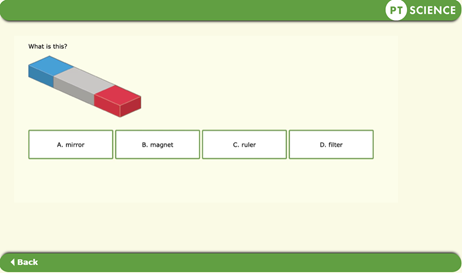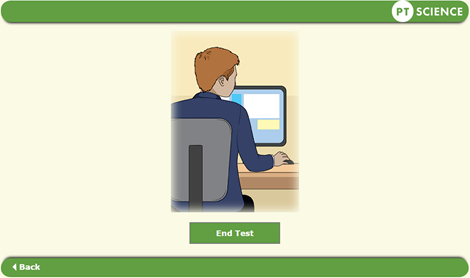What happens on the day?
Paper testing
Time needed for testing (paper tests)
This is not a timed test – pupils should be given as long as they need to complete it. If the test is to be taken in one session, it should take about one hour.
General arrangements for testing
- Make sure that the testing room is comfortable.
- Place a ‘Testing – Do Not Disturb’ sign on the door.
- Try to prevent any interruption of the testing session by visitors or announcements.
Material needed for testing (paper test)
- Each student will need a Student Booklet, a pencil and an eraser.
- The use of a calculator is not permitted.
- You will need these instructions and your own copy of the Student Booklet for the testing session.
Getting ready for testing
- Explain to the students why the test is being given, as well as describing the conditions under which testing generally takes place. You might wish to add some words of reassurance to allay any possible fears, for example the purpose of the test is ‘to help find out what you can do and where you need more help’ or ‘it will help your teacher next year to know what you can do’.
- Ask pupils to fill in the information required on the front cover, giving help if required. Alternatively, the school can complete these details.
- Tell the students the following, in your own words:
- You will read all instructions and explain what is involved.
- They will be allowed as much time as they need to complete each section.
- They should write clearly. If they make a mistake, they should rub/cross it out neatly and write the new answer clearly.
- If there is anything they don’t understand, they should ask. (Additional information on procedure may be given, but no other help should be provided by you.)
Starting the tests
Work through practice question with the students, explaining what they have to do and how to indicate their answer. Give them time to respond and check that everyone has understood and has chosen the correct answer before continuing.
Once the students have completed the practice question, instruct them to start work on the test itself.
Monitoring student progress during a test
The teacher or invigilator should actively ensure that students are working their way through the test with intent and that there is no talking or opportunity to copy from another’s work.
While the students are taking the test, the teacher or invigilator should walk around to check that they are progressing appropriately and that they are not having difficulty with the methods of answering.
Ending the test
At the end of the test, please collect the Student Booklets. Fill in the Batch Header Sheet (BHS) and data file, and prepare the batch to be sent to GL’s Scoring & Reporting division.
Please see the crib sheet (paper test) for invigilators.
Digital testing
Please read the information in the ‘Getting Started’ section of Testwise help.
Time needed for testing (digital test)
The tests are untimed, but most students will take about an hour to complete the test.
Material needed for testing (digital test)
A copy of the administration instructions.
A computer or laptop, fully charged and in good working order, with a mouse and headphones for each student. Alternatively, a tablet device, again fully charged and in good working order, and headphones for each student.
Ensure that equipment meets the minimum system requirements
General arrangements for testing
- Make sure the testing room is comfortable.
- Place a ‘Testing – Do Not Disturb’ sign on the door.
- Try to prevent any interruptions of the testing session by visitors or announcements.
- Set up the computers in advance.
Administering the digital test
The test must be administered in a formal test environment. Students should be made aware that they are taking a test and that the usual expectations of behaviour and constraints of a test session will be in place.
Introduce the test with the following information, adapted as required:
‘Today you are going to take a science test. All instructions are given through the voiceover and you should listen carefully to make sure you understand what you have to do. (All directions, examples and practice items are part of the test and are delivered via the audio.)
This test will take you about an hour. You must not talk to each other.
If you have any questions during the test, you should put up your hand and wait for me/someone to come to you. I cannot help you to answer any questions but I can read words if you need me to. [You should not explain word meanings.]
It doesn’t matter if you find the questions difficult, just try your best. If you cannot answer a question, you should carry on with the other questions and come back to the difficult ones if there is time. Do not copy anybody else’s work. When you have finished go back and check your answers. Do you have any questions?
First we will try some practice questions, so listen carefully. Stop when you have finished the practice questions.
Click on the ‘Take Now’ button.’
Starting the test
At the beginning of the first part of PTS there is a series of examples to show the students how to answer the different types of questions. Here is the first example:

Students can view the examples at their own pace and go back to see again what they need to do. When testing younger students (for example those taking PTS 8), you may want to oversee this part of the process.
During the test
- Students use the ‘Next’ and ‘Back’ buttons to navigate through the questions.
- Students must work in silence.
- Teachers should walk around during the test to check that students are progressing appropriately and that they are not looking at each other’s work or talking.
- Teachers should also check that the students have not rushed through any part of the test without attempting to answer each question.
Ending the test
At the end of the test, the following screen will appear:

Once students have ended the test, their results will be saved and stored automatically. Students must not try to exit the test or close the screen by clicking on the cross at the top right-hand corner as this will cause results to be lost.
If you have any problems using Testwise, please see the Testwise support.
Please also see the crib sheet for digital test for invigilators.

